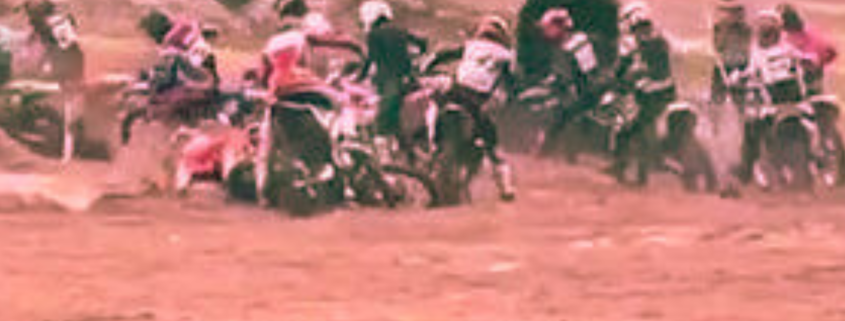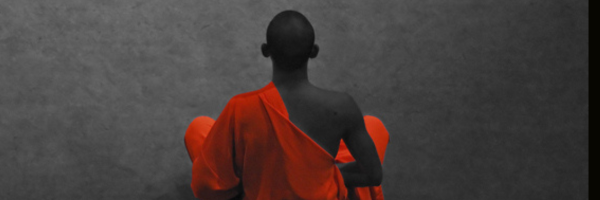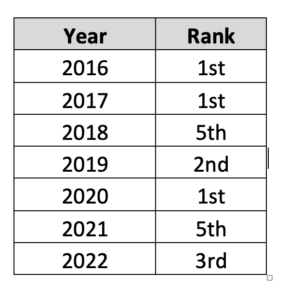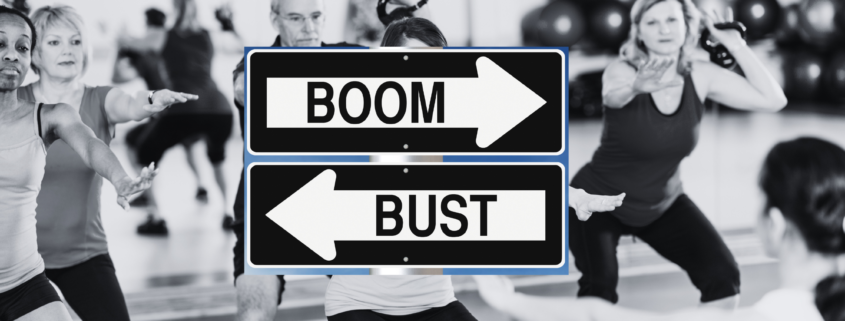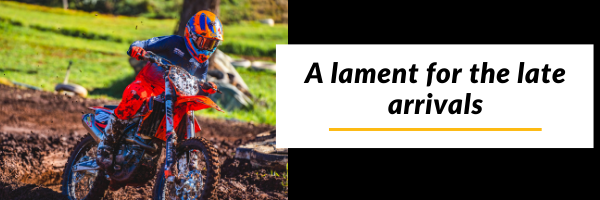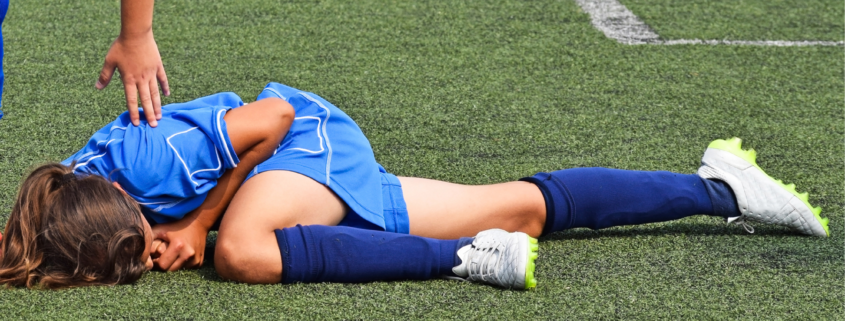What’s in a name? Physical preparation coach – The origin and intent of the term
With a growing number using the term ‘physical preparation coach’ it’s timely to share the origin and intent of this term. In this article I do this through consideration of cultural influences, sport history and my personal experiences.
Australia
I entered the profession in 1980 in Australia through an exercise physiology degree and that was the only possible specific outcome expected for graduates. And that was only available in corporate fitness. I knew only a few graduates that got that work. The rest added a second degree (e.g., teaching, physiotherapy etc.) or got work in totally unrelated fields.
There were no jobs in sport outside sports administration for graduates. At best you could hope to get a volunteer role as a fitness coach or sprint coach. For that you might receive a season pass. However, to get those roles you needed no qualification other than a proven personal history in the activity.
Therefore, a very fit person who loved to run a lot could be considered as a candidate for a role as a fitness coach, as all fitness training for sport in the early 1980s in Australia was distance running with a sprinkling of interval training
And a former sprinter could be considered as a candidate for the role of sprints coach. All sprint training for sport conducted in Australia in the first half of the 1980s was interval training, as the bias in speed was towards endurance. And keep in mind that many sports, including what was then the Victorian Football League (VFL – now the Australian Football League or AFL) didn’t endorse any short sprinting as it was considered too risky for their players to engage in due to the risk of soft tissue injuries.
You might be wondering what was going on with strength training in sport in that era. The very few sports that engaged in strength training limited their work to bodyweight exercises, and for this training was supervised by the sport coach e.g. some swim coaches such as the late John Carew (this story shared with me in person) would have basic equipment on the side of the pool such as a chin up bar. However, this was rare. Strength training was taboo in Australian sports, as it apparently caused athlete to be ‘muscle bound’ and or injured.
In fact the status of the sporting training industry in the early eighties was one where strength training was rarely conducted. The ‘it will slow me down’, and ‘it will make me inflexible’ attitudes dominated. Training in general was at that time a neglected area. The Australian Rules Football players (then playing in the VFL) were participating in various types of formal training, but the strength training was circuit training with light weights and the conditioning consisted of carrying bricks in the hands for many kilometers. At least they were doing something. Rugby league players in the New South Wales Rugby League were starting to do things, but they were even more archaic than the Australian Rules footballers. Rugby union players were warming up by stubbing out their cigarettes and then commencing a short game of touch football. Swimmers would fade like superman faced by kryptonite at the mere mention of the word weight training. [1]
And in all fairness, the way strength training was being conducted, the concerns were reasonable. I specifically refer to the influence of bodybuilding training, the methods, of which I have spoken about in length in prior publications.
A lack of awareness of the ‘need for speed’ (attempted acceleration) in the concentric phase in the power athlete may result in an adaptation to a non-specific rate of force development. This is the same non-effective and perhaps detrimental training effect that occurred when athletes first started using strength training and used the bodybuilding methods. [2]
As the only one in my entire university department with a serious interest in strength training.
My main focus in study at that time was on strength. I appeared to be the only one in my course with this interest at that point in time. Aerobic training was the main focus of research in the seventies and early eighties. The main vocational specialty areas being pushed onto students at that time (outside of physical education teaching) was laboratory testing. A number of graduates went out and established commercial laboratory fitness testing facilities and services – with limited success. Corporate fitness was also being promoted as a future growth area. [3]
I was confident that there was a better way to for athletes to strength train than the dominant paradigms and was committed to helping athletes achieve that.
However, who was getting to train athletes in the early 1980s? It wasn’t happening. At best you could get a job in the fitness industry as a ‘gym instructor’, and if athletes just happened to be gym members, you may get contact with them.
I was in a unique situation at my university during the early 1980s for a number of reasons. Firstly, the weightlifting club I was involved in attracted athletes who did embrace strength training in that era, including track and field athletes, martial artists, and contact sport athletes. Secondly as the only university in our state at that time, we had an incredible number of Olympians as students, and I became the first strength consultation employed at the university gym. Essentially, I spent more time in the gym that I did in the lecture rooms and that didn’t go unnoticed by the athletes. That became my classroom. Additionally I was working part-time and one off gigs as an exercise physiologist and gym instructor at various gymnasiums.
In summary Australia did not have a term to describe a profession of training athletes because the role did not exist. The Australian Sports Medicine Foundation (ASMF) was founded in 1963 and they provided education in the area of in the moment treatment of injuries as their only specific to sport educational offering. Individuals who filled these roles were referred to as ‘trainers’, typically of lower qualifications than a physiotherapist, whose role was to provide massages, run water, and provide immediate assistance to athletes at the moment of injury.
And that was the landscape of Australian sport when I was creating a role that didn’t exist – providing professional commercial physical training services to athletes. When asked what I did in the early 1980’s I would say ‘I train athletes’. To which the response was invariably ‘What sport?’ People assumed I was a sports coach because there was no other role in sport at that time. I was doing something that had no name in Australia.
United States of America
There had been a different role and position description in the US. This was referred to as a ‘strength coach’. The use of this term and role professionally can be traced back to the 1950s in the United States.
Gym owner and former team manager of the 1952 US Olympic Weightlifting Team, Alvin Roy, is proposed to have been the first strength training consultant engaged in US high school, notably in the sport of American football. [4] Roy went on to also become possibly the first strength training consultant engaged in American college sport when he worked with the Louisiana State University Football team in 1958. [5]
Alvin Roy is also considered to be the strength consultant in professional sport in the US when in 1963 he was hired to work with the 1963 San Diego. And Kim Wood is considered the first full time NFL strength coach when he was hired to work for Cincinnati Bengals. [6]
Boyd Epley is considered the first strength coach hired full-time in US college sport when he was hired in 1969 by the Athletic Director of the University of American to work with the American football team.[7]
The National Strength Coaches Association (NSCA) was formed in the US in 1978, specifically to unite and support strength coaches at college level in American football. In 1981 they changed the name to the National Strength & Conditioning Coaches Association, broadening the title to include ‘conditioning’, without having to change the acronym of NSCA.
Europe
There was less clarity from Europe as to a term or job description. The UK was relatively underdeveloped in the area of sports training. One of the key influences in the UK was Frank Dick, who published a book titled ‘Training Theory’ in 1974. There was no reference to a term for the coach who was responsible for the physical training, probably because this was most likely the responsibility of the head coach in the UK in that era. Most found the information from the Soviet Union during the 1980s to be unreialbe, in part due to the Cold War between the US and the USSR (1947-1991).[8] The ‘Berlin Wall’ didn’t fall until 1989, therefore literature coming out of the well-organized state know as East Germany was limited.
This didn’t mean literature was devoid in Europe. It just wasn’t readily available to the rest of the world. This changed when Canada became one of the most highly funded nations in sport preparation in the lead up to their two decades of Olympic Games – the Montreal Summer Olympics in 1976 and the Calgary Winter Olympics in 1988.
One such immigrant to Canada was Hungarian Tudor Bompa, who released the first edition of this book ‘Theory and Methodology of Training’ in 1983.
In this book he shared a very different approach to sports training compared to the only other organized theory, that of the US – and their ‘strength and conditioning’ – identifying what he referred to as four ‘Training Factors’ – physical, technical, tactical and theoretical.
Choosing a path
As a student of the profession seeking direction in a career path that did not exist in Australia (at least not in a commercial, get paid for your services, sense), I was left to make a decision – which path to follow? What name do I used to describe my services? Do I follow the path that made the most sense – the Eastern European influence shared in the book by Bompa? Or do I follow the US path, one that was showing greater growth in public awareness, and backed by the might of the US culture, population, popularity and money?
I share this dilemma in my 1997 book ‘Winning and Losing’:
The concept of strength and conditioning as a role has a strong American influence. Not so the concept of someone responsible for physical preparation. [9]
I did not rush to this decision. The pattern I have established is test and refine a training concept or innovation for about a decade before sharing it as a recommended way.
In 1988 the NSCA arrived in Australia. I took on the state director role in that first year, and then the National Executive Director role (an unpaid role) for nearly a decade.
During that time a few key events occurred. I share two of them with you.
A conversation that shaped the acceptance of the term ‘Strength & Conditioning’ in Australia
After the arrival of the NSCA in Australia, and in my role as the leader, I had a meeting with the key figure in the Australian Sports Commission/Coaching Council. The NSCA of Australia (as it was known at that time) was seeking recognition from this body to be treated in the same was as all other sports registered with and recognized by the government regulatory body.
He expressed serious reservations about this, specifically that he felt that the NSCA was too unbalanced – more about strength training than other forms of physical training. I assured him that was not the case. I believe that this conversation was pivotable in achieving the goal of the NSCA of Australia. I also believe my answer was naïve.
I have reflected on that conversation a lot since and realize in retrospect how my advocation shaped the history of this movement in Australia.
By the early 1990s, as I developed a more thorough insight into the NSCA in the US, I had moved away from my support for the term ‘strength & conditioning’.
Inspired by Bompa’s writing, I formed the belief that adding the word ‘coach’ after the training factor ‘phyical preparation’ would be a far better alternative.
I shared the reasons for this conclusion in my 1997 book ‘Winning and Losing’:
I am not supportive of the term strength and conditioning for two reasons. … Firstly, I am not supportive of this term because of the implications of its literal interpretation. It separates strength from all the other elements of conditioning. I believe this is inappropriate and misleading. It then, by virtue of word sequence, places strength as a more important component than conditioning. Again I suggest that this is inappropriate and misleading. The message being given by the mere use of this term is counterproductive – unless you agree with strength being separate and more important.
The second reason I am not supportive of the term strength and conditioning is based on a historical understanding of it’s origin. In 1978 the National Strength Coaches Association (NSCA) was created in mid-west America. In 1982, for whatever reason, the word ‘Coaches’ was replaced with the word ‘Conditioning’. (it fitted in with the initials NSCA!) This association has gone on to shape and influence the role of ‘strength and conditioning coaches’ throughout the western world.
…. I believe the term ‘physical preparation’ is a better term. Athletic preparation another. [10]
A second conversation that shaped the future of the term ‘strength & conditioning’ in Australia.
Following on from my formative late 1980’s conversation with a key government figure in and the resultant regret, I did not want to be in that position again. I had decided that the term ‘physical preparation coach’ would be my path.
In the early 1990s an opportunity arose to change the NSCA of Australia to an independent organization. This was not a breakaway in any sense. The population of the target audience in Australia was so small the organization struggled to stay afloat, and the US NSCA was clear in their lack of interest at that time of establishing themselves outside of the US.
A meeting of the then Board of Directors was called to discuss and decide on the future of our organization. I saw this as an opportunity to move the organization to a term more aligned with my values. At the same time I recognized that the organization was not mine per se, and that the Board would ultimately make that decision.
I shared this story and the outcome in my 1997 book ‘Winning and Losing’:
In 1993, I proposed to the then Executive Committee that the NSCA (Australia) be replaced by a Australian organization, with no royalties being paid to America, providing publishing opportunities to Australians, and providing information relevant to Australian sport, employment and culture. This recommendation was accepted. However my views that the term strength and conditioning be deleted was not supported. The end result – The Australian Strength and Conditioning Association. This decision may have had a big impact on the acceptability of this term in Australia today. [11]
I accepted the decision of the board and continued to serve the organization for the rest of the decade, despite holding different values about the title I preferred to describe my services. Up until 1996, I was one of the only individual gaining full-time income in Australia training athletes, and the broader sporting bodies had not been exposed to the term ‘strength & conditioning’, so what I referred to myself was not an issue.
Post 1996, certain changes occurred in the Australian sporting landscape and the awareness of this term ‘strength & conditioning’ grew at a faster rate. This and other factors led me to decide in 1999 to commence my own coach education program.
Adoption of the term ‘physical preparation coach’
Up until I published my 1997 book ‘Winning and Losing’, only a few Australians in the physical training niche had heard of my term, and some later adopted it. After the release of my 1997 book and subsequent books, along with the commencement of the KSI Coach education program in 1999, others around the world who were exposed first hand to this term began to adopt it.
It’s now been 40 years since I was first faced with the dilemma of what path to choose in the title of my services and its associated training values. I see the term now being used in a ‘second generation’ sense, that is by individuals who did not learn it firsthand from myself.
For anyone who values origins and intents, this journey back in time may serve to educate.
Conclusion
In this article I have sought to share with you the origin and intent of the term ‘physical preparation coach’. I have consistently referred to and recommended the book by Tudor Bompa, as this book shaped my thinking.
…by Tudor Bompa in his classic book Theory and Methodology of Training: The Key to Athletic Success (first published 1983). This is an excellent text and I believe it should be in every coach’s library. Not an easy book to read first up, but one which you will find yourself returning to as a reference guide. An excellent starting point to give you structure in theory and methodology. [12]
Personally, I have no ‘skin in the game’ as to what term you use to describe yourself. At the end of the day, it is a semantic. I am less interested in a persons name or title, and more interested in how they conduct themselves and serve the athlete/client.
I have seen the term ‘physical preparation coach’ abused, by individuals whom I suggest apply to term to themselves to provide the perception they offer more than they do. As the person who coined the term, it was intended to be used as a reflection of a more balanced and holistic approach than what the term ‘strength & conditioning’ implies. Most personal trainers from my perspective typically work with only two physical qualities e.g., strength and endurance. Unless your services offer a full suite of physical preparation training, then the use of physical preparation is not relevant.
Finally, both the term ‘strength & conditioning coach’ and ‘physical preparation coach’ have one word in common – coach. For me, coaching involves regular collaboration over the training process. Most physical coaches operate form a prescriptive approach – and as such the term ‘coach’ is not relevant on this basis.
References
[1] King, I., 1997, Winning and Losing (book)
[2] King, I., 1998, How to Write Strength Training Programs (book)
[3] King, I., 1997, Winning and Losing (book)
[4] King, I., 1997, Winning and Losing (book)
[5] https://titansupport.com/category/ken-leistner/
[6] https://titansupport.com/category/ken-leistner/
[7] Shurley, JP, and Todd, JS. “The Strength of Nebraska”: Boyd Epley, Husker Power, and the Formation of the Strength Coaching Profession. J Strength Cond Res 26(12): 3177–3188, 2012
[8] https://en.wikipedia.org/wiki/Cold_War
[9] King, I., 1997, Winning and Losing (book)
[10] King, I., 1997, Winning and Losing (book)
[11] King, I., 1997, Winning and Losing (book)
[12] King, I., 1997, Winning and Losing (book)




